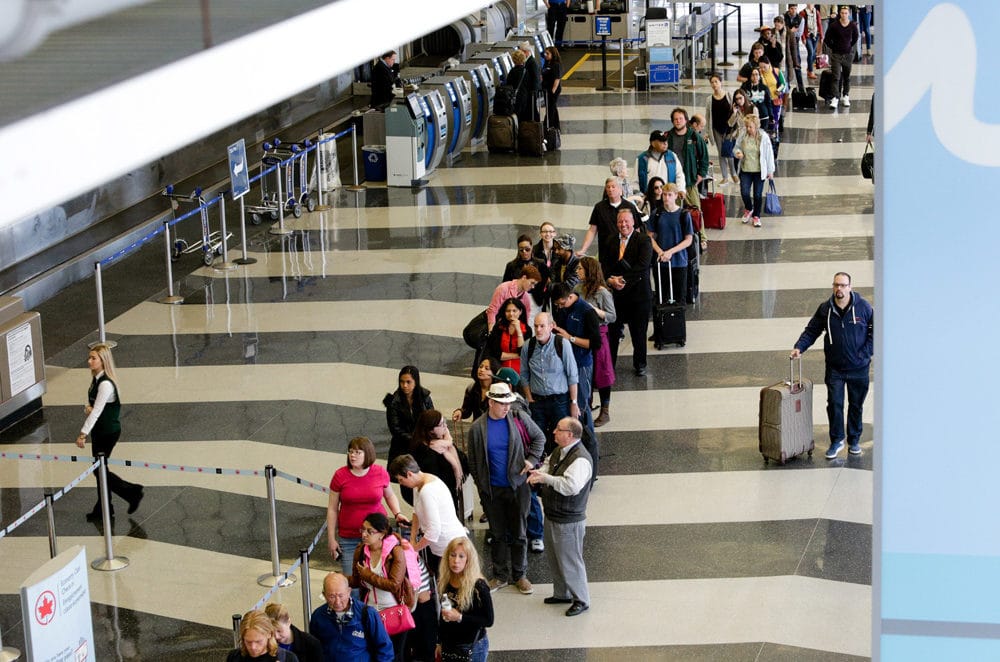TSA Security Wait Times: The Long and the Short of It
Share

APEX Insight: It has been a bad month at the office for the US Transportation Security Administration. Images of weary travelers waiting in absurdly long security lines were broadcast globally as #iHateTheWait became a trending hashtag. With Memorial Day weekend around the corner, one of the busiest travel times of the year in the US, we look at what caused the problem and what is being done to solve it.
Flying out of Chicago O’Hare International Airport (ORD)? Arrive at least three hours before departure.
This was the advice officials from the Transportation Security Administration (TSA) gave to travelers flying out of the second busiest airport in the United States nearly two weeks ago. On May 14, TSA security lines at ORD were over two hours long, causing more than 450 people to miss their flights, while others slept overnight in terminal buildings. Similar scenes are playing out at major airports across the country and frustrated travelers are taking to social media to make Airlines for America’s #iHateTheWait hashtag trend on both Twitter and Instagram. A video of a comically long security line at Chicago Midway International Airport inevitably went viral.
How did this happen?
According to some, this was a crisis long in the making and entirely avoidable. Early warning signs were visible as far back as February when Hartsfield-Jackson Atlanta International Airport issued an ultimatum to the TSA. Its message was simple: reduce wait times or be replaced by private contractors. The Port Authority of New York and New Jersey, which manages the New York City area’s three major airports sent a strongly worded letter to the agency issuing a similar threat at the beginning of this month.
Among conservative thinkers, the simple answer is to privatize the TSA. “Airports that use private security contractors have seen shorter lines, happier customers and lower costs,” argues Riley Walters, a researcher at the Heritage Foundation, a Washington DC-based think tank. Unsurprisingly, TSA Administrator Peter Neffenger sees things differently. “When I came into this organization last year, I found an organization with 5,800 fewer screeners, and it had fewer front-line officers than it had four years previously,” he said, testifying Thursday last week before the House Oversight Committee.
“When I came into this organization last year, I found an organization with 5,800 fewer screeners, and it had fewer front-line officers than it had four years previously.” – Peter Neffenger, TSA
Indeed, since 2013, the TSA has reduced its number of officers from 47,000 to 42,000. In the same period, the American Federation of Government Employees, the labor union representing TSA officers, estimated that passenger volume at US airports rose 15 percent to 740 million from 643 million. J. David Cox Sr, national president of the union, thinks the blame lays with those on Capitol Hill. In a letter sent last week to House and Senate leaders, he wrote, “Congress has starved TSA of the resources it needs to meet growing demands at our nation’s airports.”
Fixing the Mess
Amid the outrage, Congress appears to have changed its tune. Last week it gave legislative approval to the Department of Homeland Security for reallocating $34 million worth of funds. This should boost the number of officers at airports; 768 new staff are expected to start work this month alone. Chicago’s mayor Rahm Emanuel and Peter Neffenger also jointly announced the agency would send 58 new security officers and four bomb sniffing dogs in the next month to ease the pressure at O’Hare.
Kelly Hoggan, the TSA’s head of security, was removed from his position on Monday. Hoggan came under heavy criticism at a US House Oversight Committee hearing on May 12 for receiving over $90,000 in bonuses and awards during a 13-month period between 2013-14.
Twelve days after the scenes at O’Hare on May 14, the same TSA officials who advised travelers to arrive three hours before their flight now say wait times are down to 15 minutes or less. At least for the time being.
What now?
With a record 231.1 million passengers expected to take to the skies this summer, US airlines and airports are not taking any chances. Delta Air Lines, American Airlines and United Airlines will spend as much as $4 million each to hire workers to help manage lines and rearrange bins at security checkpoints. Airports across the US are making similar arrangements, according to Kevin Burke, president of the Airports Council International-North America trade group. “It’s voluntary and it’s temporary,” he said. “It’s really not the role of airport workers to do the TSA’s job. We need to get through this.”


